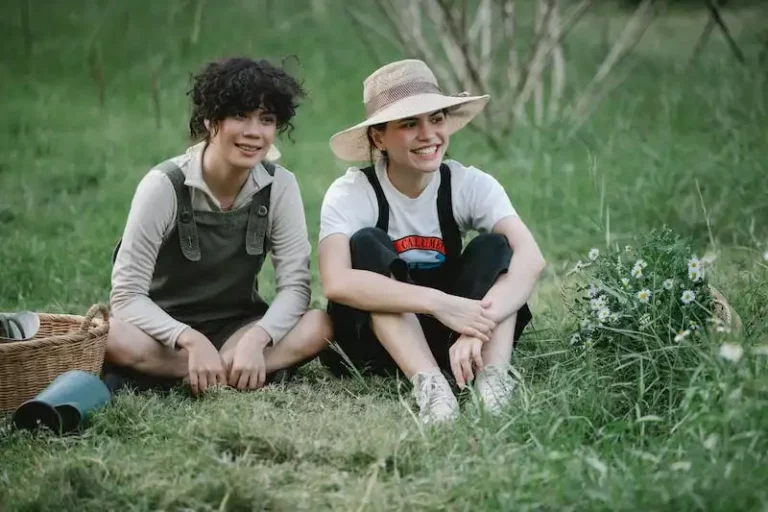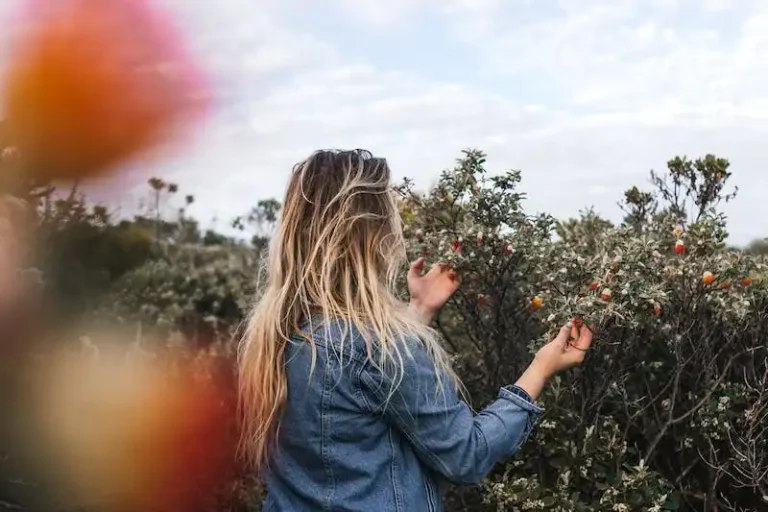The False Aralia, also known as Dizygotheca Elegantissima, is a popular plant from the Araliaceae family. It is often grown as a houseplant and is loved for its unique and elegant appearance. While it doesn’t produce traditional flowers, its broadleaf foliage adds a touch of beauty to any indoor or outdoor space.
When it comes to growing False Aralias, there are a few important care tips to keep in mind. This plant thrives in bright, indirect light, so it’s best to place it near a window or in a spot where it can receive filtered sunlight. Avoid direct sunlight as it can burn the leaves. In terms of watering, False Aralias prefer a well-draining soil to prevent waterlogging. Watering can be done once the top inch of soil feels dry to the touch. It is also important to avoid overwatering, as this can lead to root rot.
Propagation of Dizygotheca Elegantissima is typically done through stem cuttings. You can take a cutting from the main stem, making sure it has at least two leaflets. Remove the lower leaves and place the cutting in a moist, well-draining soil mix. Keep the cutting in a warm and humid location, and within a few weeks, you should see roots starting to form. Once the cutting has established roots, it can be potted into a larger container.
In terms of common problems and pests, False Aralias can be susceptible to infestation by spider mites and mealybugs. Regularly inspect your plant for any signs of infestation, such as webbing or small white cotton-like spots. If an infestation is detected, treat the plant with an appropriate insecticide or use natural methods like neem oil or insecticidal soap.
With proper care and the right growing conditions, False Aralias can be a stunning addition to any indoor or outdoor space. Their unique foliage and elegant shape make them a favorite among plant enthusiasts. Whether you are a beginner or an experienced gardener, Dizygotheca Elegantissima is a great choice to add a touch of greenery to your home or garden.
False Aralia Information – How To Grow A False Aralia Houseplant
False Aralia, also known as Dizygotheca elegantissima, is a popular houseplant that belongs to the Araliaceae family. It is native to the warm tropical forests of the Pacific Islands.
This plant, with its broadleaf and stalked leaves, is grown for its ornamental value. The long threadleaf tips, whtecreamy edges, and common crests make it an attractive addition to any indoor design.
When planting a False Aralia, it is important to note that it grows best in well-draining soil with a pH between 6 and 7. Excess waterlogging can cause root rot and damage the plant.
False Aralia prefers high humidity and warm temperatures between 65-80°F (18-27°C). It can tolerate lower temperatures but should be protected from frost. Placing the plant in a bright, indirect light spot is ideal for its growth.
Watering the False Aralia should be done in moderation. It is best to let the topsoil dry out slightly between watering sessions. Using a calendar to keep track of watering frequency can help ensure proper care.
During the spring and summer months, the False Aralia may produce small flowers, although this is not common for indoor plants. If your False Aralia does bloom, it is an indication that it is happy and well-cared for.
Propagation of the False Aralia can be done through stem cuttings. Taking a cutting with at least two leaf nodes and placing it in a moist potting mix will encourage root development. A rooting hormone may be used to promote faster growth.
To prevent the False Aralia from becoming leggy, regular pruning is recommended. Trimming back any excessively long or damaged stems will help maintain a compact and bushy appearance.
False Aralias can be grown both indoors and outdoors. If growing outdoors, make sure to provide a sheltered spot away from strong winds. The plant can reach dimensions of around 3-6 feet (0.9-1.8 meters) in height.
Buying a False Aralia is an excellent idea if you are looking for a low-maintenance tropical plant to add to your home. Just follow the instructions provided and enjoy the beauty of this fascinating plant.
In conclusion, the False Aralia, or Dizygotheca elegantissima, is a stunning houseplant that adds a touch of tropical beauty to any space. With its vibrant foliage and easy care requirements, it is a great choice for both experienced and novice gardeners alike.
False Aralia Information
The False Aralia, scientifically known as Dizygotheca elegantissima, is a tropical plant that belongs to the Araliaceae family. It is also commonly known as Plerandra elegantissima or Dizygotheca elegantissima.
Originating from the tropical regions, this plant grows best in warm climates. It is a popular choice for indoor gardening, as it can easily be grown in pots and containers. The False Aralia is characterized by its elegant and delicate-looking foliage, which consists of glossy, dark green leaves. The leaves have a serrated edge and are stalked, with several leaflets arranged in a broadleaf or sometimes saucer-like formation.
When grown in the right conditions, the False Aralia can produce small clusters of white or creamy flowers, which are sometimes followed by small berries. However, it is important to note that the flowers and berries are not its main attraction, as the plant is primarily grown for its foliage.
To keep your False Aralia healthy and thriving, be sure to provide it with the right care and conditions. Here are some tips and instructions:
- Light: The False Aralia prefers bright, indirect light. Avoid exposing it to direct sunlight, as it can scorch the leaves. Place the plant in a spot where it can receive filtered or dappled light.
- Water: Water the False Aralia regularly, but allow the top inch of soil to dry out before watering again. Avoid overwatering, as it can cause root rot. Ensure good drainage in the pot or container.
- Temperature: This plant thrives in warm temperatures between 65-80°F (18-27°C). It is sensitive to cold and frost, so keep it away from drafty windows or doors during winter.
- Propagation: The False Aralia can be propagated through stem cuttings. Take a stem cutting with a few leaf nodes, remove the lower leaves, and place it in a jar of water or well-draining soil. Keep the soil moist and provide the cutting with bright, indirect light.
- Fertilizer: Use a balanced liquid fertilizer once a month during the growing season (spring and summer). Follow the instructions on the fertilizer package for proper dilution and application.
- Pruning: Prune the False Aralia to maintain its shape and control its growth. Remove any leggy or damaged stems to encourage healthier growth.
It is important to note that the False Aralia has properties that are toxic to humans and animals if ingested. Keep it out of reach of children and pets.
When buying a False Aralia, look for a healthy plant with lush foliage and no signs of pests or diseases. Avoid plants that have yellowing or drooping leaves, as it may indicate a problem.
In conclusion, the False Aralia, with its elegant and tropical appearance, can be a beautiful addition to your home or office space. With proper care and attention, it can thrive and bring a touch of nature indoors.
False Aralia Care Instructions
The False Aralia, also known as Dizygotheca elegantissima, is a popular indoor houseplant. It is a type of broadleaf plant that is native to the forested areas of New Caledonia in the Pacific. In Latin, its family name is Araliaceae, and its synonyms include Plerandra and Dizygotheca.
The False Aralia is an elegant and beautiful plant that likes to be grown indoors. It prefers to be placed in a spot where it can receive bright, indirect light. Although it can sometimes tolerate low light conditions, long periods of insufficient light can cause the plant to become leggy. To ensure the best shape and healthy growth, it is recommended to provide the plant with fluorescent light or other artificial lighting if needed.
When it comes to watering, the False Aralia does not like to be overwatered. It is best to water the plant when the top inch of soil feels dry to the touch. Additionally, it is important to avoid waterlogging, as this can lead to root rot. If the plant is kept in a location with low humidity, it may benefit from occasional misting to increase humidity levels.
During the winter months, the False Aralia prefers slightly cooler temperatures than during the growing season. It is best to keep the temperature around 60-70°F (15-21°C). It is also important to protect the plant from drafts and temperature fluctuations, as they can cause leaf drop or other issues.
Fertilizing the False Aralia is important for its overall health and growth. It is recommended to use a balanced, water-soluble fertilizer every 2-4 weeks during the growing season (spring to early autumn). This will provide the necessary nutrients for the plant’s development.
Propagation of the False Aralia can be done through stem cuttings. Take a cutting from the plant between spring and autumn and place it directly into a well-draining potting mix. Keep the cutting moist, and new roots should develop within a few weeks.
The False Aralia is generally a pest-resistant plant. However, it may occasionally encounter problems such as aphids, spider mites, or mealybugs. If an infestation occurs, it is best to treat the plant with an appropriate insecticide or use a natural solution such as neem oil.
In summary, the False Aralia is an elegant houseplant that can bring beauty to any home. By providing the right amount of light, water, and nutrients, and protecting it from drafts and pests, you can ensure its health and longevity. Follow these care instructions, and your False Aralia will thrive in any indoor setting.
False Aralia Problems
False Aralia, also known as Dizygotheca elegantissima, is a tropical plant from the Araliaceae family. It has long, stalked leaves with serrated leaflets, resembling a crest. This plant grows in the tropical forests of its native origin, Latin America.
False Aralia is a popular indoor plant known for its unique foliage. However, it can face various problems that affect its health and appearance.
- Excess light: False Aralia prefers bright but indirect light. Exposing it to too much direct sunlight can cause the leaves to burn and turn brown. Place the plant in a shaded area or use curtains or blinds to filter the light.
- Waterlogging: False Aralia does not like excessive water or waterlogged soil. Overwatering can lead to root rot and cause the leaves to become yellow and fall off. Allow the top inch of soil to dry before watering again and ensure proper drainage.
- Low humidity: False Aralia is a tropical plant that thrives in high humidity environments. Dry air can cause the leaf edges to brown and curl. Mist the plant regularly or use a humidifier to increase humidity around the plant.
- Temperature: False Aralia prefers temperatures between 65-75°F (18-24°C). Avoid placing it near cold drafts or close to heating vents, as extreme temperature fluctuations can cause leaf drop.
- Pest infestation: False Aralia can be susceptible to pests like spider mites and scale insects. Inspect the plant regularly for any signs of infestation, such as webbing or sticky residue on the leaves. Treat any infestation promptly using suitable insecticides.
- Poisonous properties: False Aralia is toxic to humans and pets if ingested. Keep it out of reach and avoid placing it where curious children or pets can access it.
By understanding these common problems and taking necessary precautions, you can ensure that your False Aralia remains healthy and beautiful. Proper care, suitable growing conditions, and regular monitoring are key to preventing any issues and promoting its growth and flowering.

